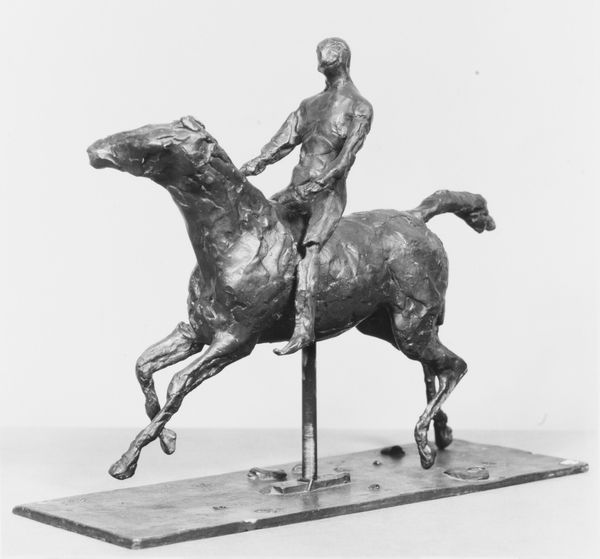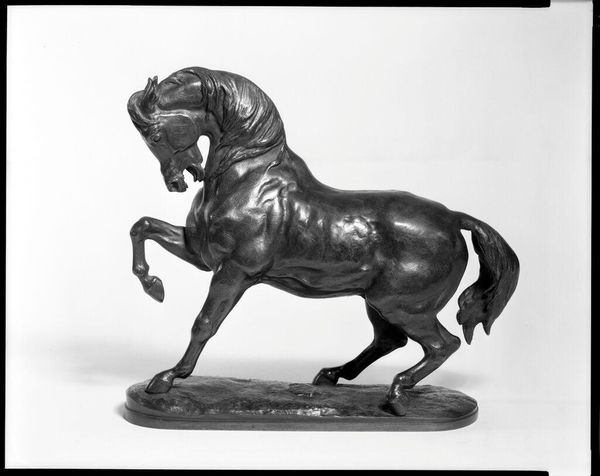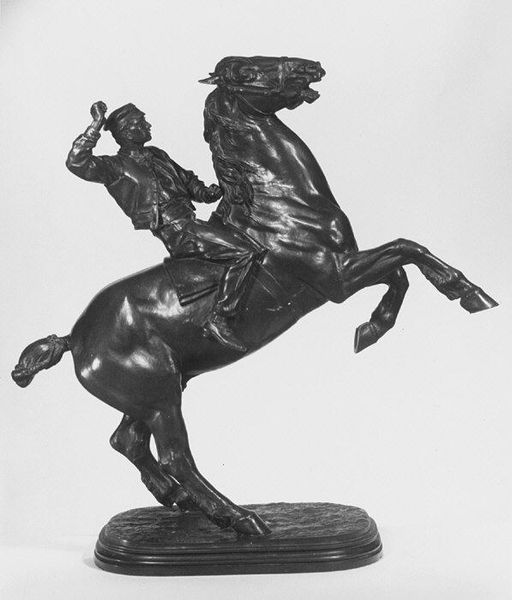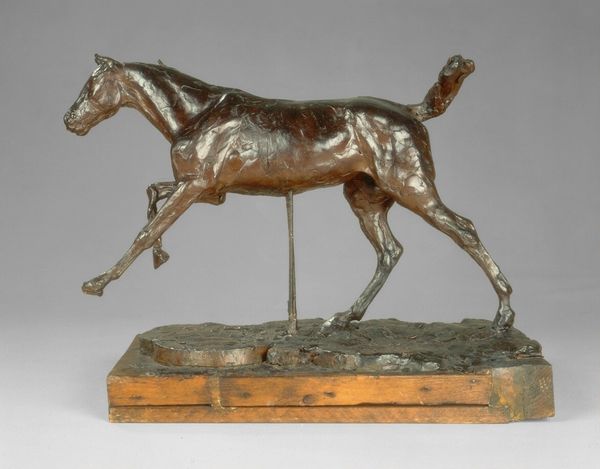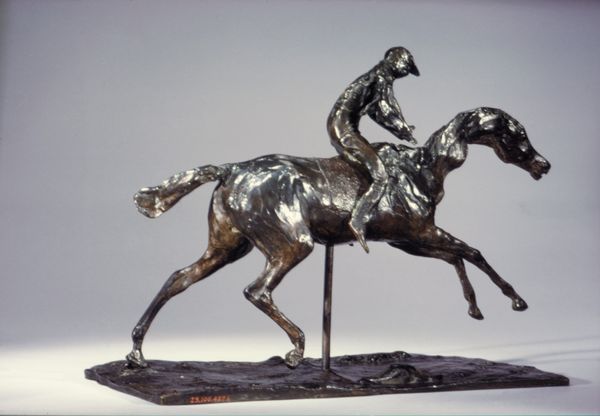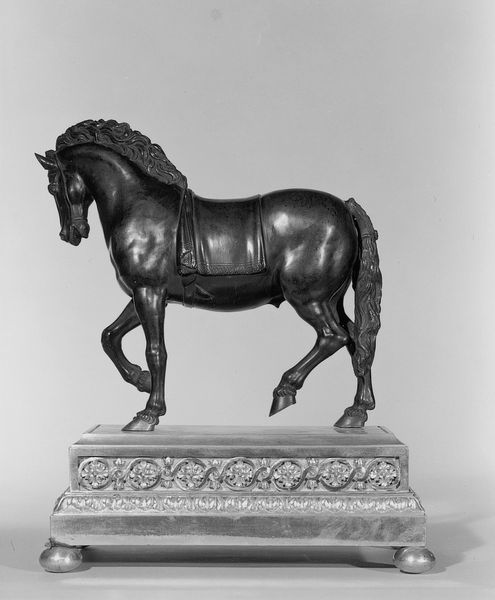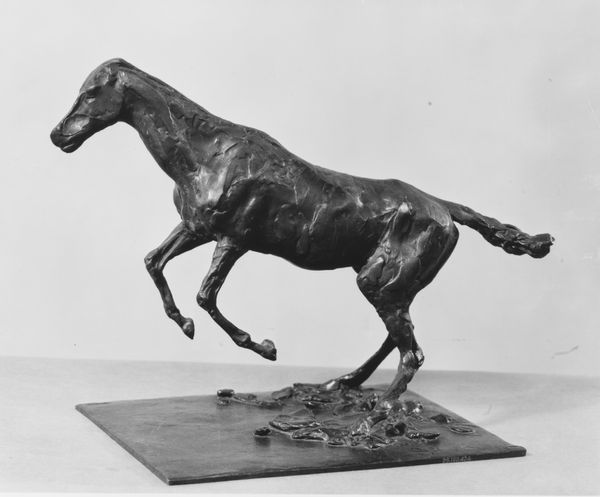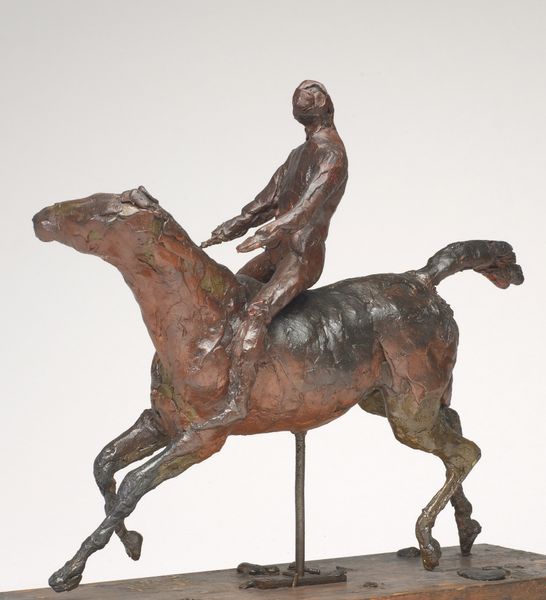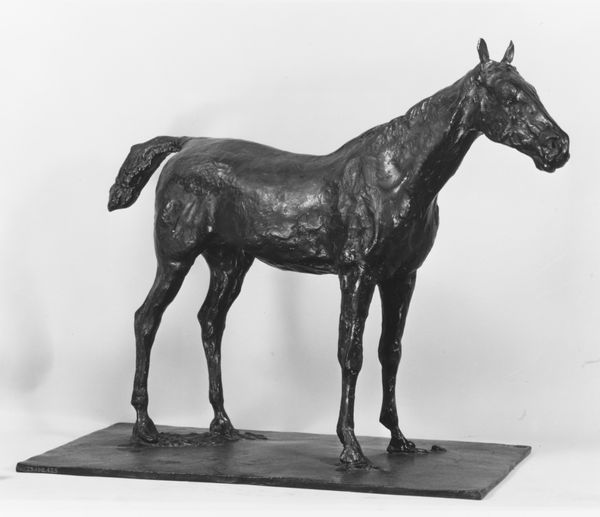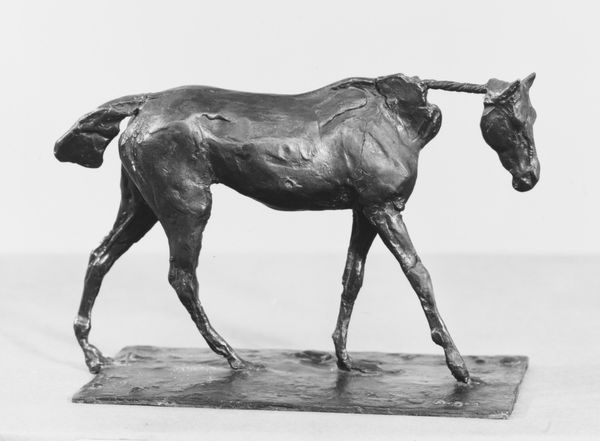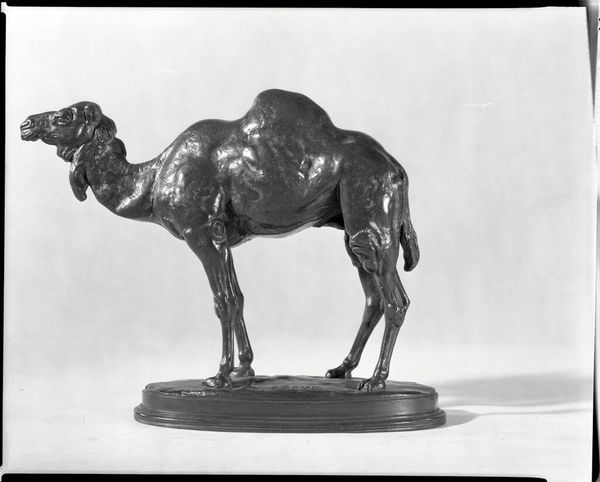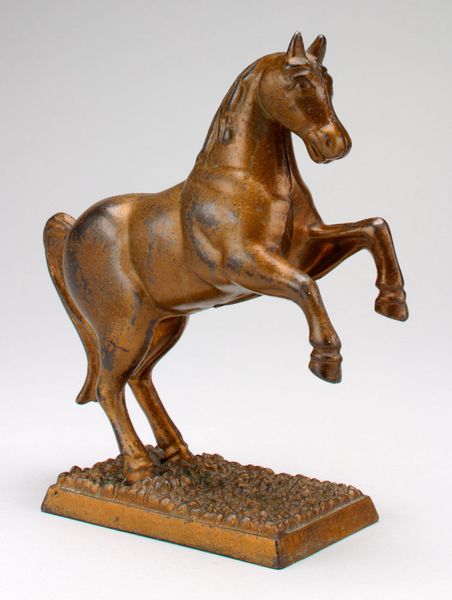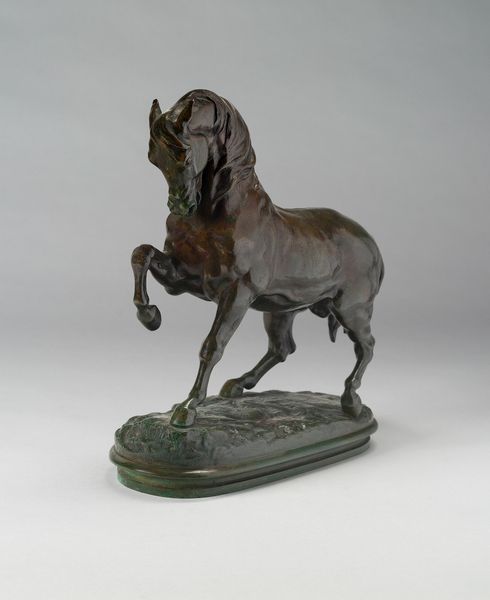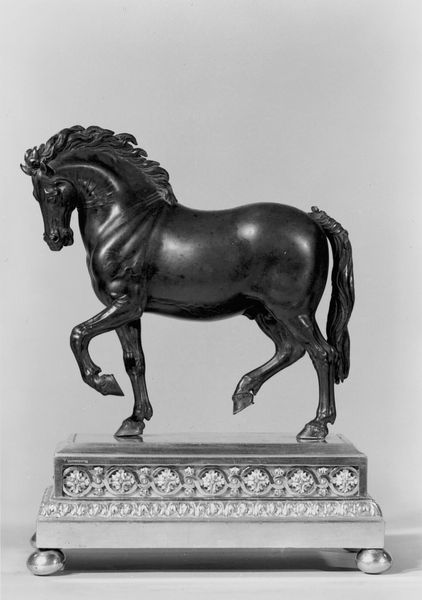
metal, bronze, sculpture
#
metal
#
sculpture
#
landscape
#
bronze
#
figuration
#
sculpture
#
france
#
charcoal
#
realism
Dimensions: 11 15/16 × 16 1/4 × 5 1/4 in. (30.2 × 41.3 × 13.4 cm)
Copyright: Public Domain
Curator: We're standing before E. Drappier's bronze sculpture, "Stray Horse," created in 1906. Editor: It’s striking, almost melancholic. The horse seems to droop under the weight of its saddle, exhausted, even though no rider is present. The sheen of the bronze amplifies that feeling, like a tear-streaked face. Curator: The title itself, "Stray Horse", directs our interpretation toward ideas of abandonment, highlighting how social structures of care are absent here. How do you interpret that further? Editor: Materially, the sculpture's weight emphasizes a tangible feeling of labor. Bronze is so demanding! The artist, Drappier, seems keenly aware of the cultural narrative embedded in depicting working animals—are they symbols of exploitation, resilience, or something in between? And that casting process is deeply tied to labor. Curator: Drappier exhibited widely in France, participating in the Salon des Artistes Francais. "Stray Horse," therefore, exists within a larger discourse about equestrian art and the status of animals in French society at the turn of the century, as well as public interest. This was not necessarily intended as an artwork to be hidden away in a home, it would likely have been encountered by the public in various exhibitions, or images reproduced for wide distribution. Editor: The choice of bronze, and its manipulation, does carry weight. How does Drappier invite commentary on these traditional sculptural practices? Curator: Its realism—the minute details of the horse's musculature, the slightly slack reins, and the tilted saddle—lends itself to that conversation. It evokes sympathy and, perhaps, challenges us to think about labor conditions, reflecting social tensions related to agriculture and human power dynamics within evolving economies of early 20th century France. Editor: This piece speaks to the relationship between object and context; Drappier is not simply creating an object of beauty, it feels to me the artwork is a commentary about societal norms in early 20th Century France and beyond. Curator: Precisely! "Stray Horse" compels us to consider art's role in social dialogue. Editor: And, for me, the artist's work with bronze highlights not only the aesthetic but the socio-political dimension as well.
Comments
No comments
Be the first to comment and join the conversation on the ultimate creative platform.
